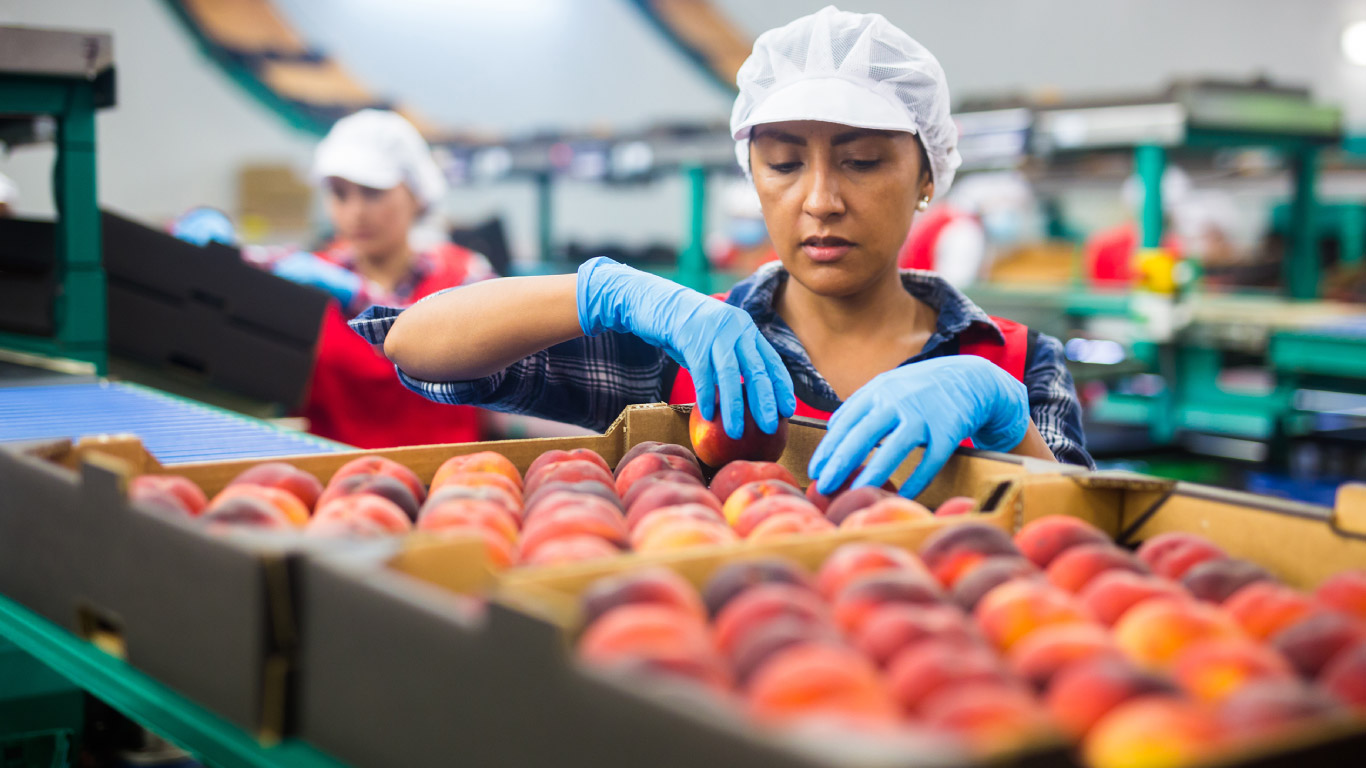
From the beginning of the millennium to the onset of the pandemic in early 2020, over 40,000 temporary foreign workers arrived in Canada to work in the food manufacturing industry. A recent paper looks at where these temporary foreign workers came from, how long they continued working in the food manufacturing industry after their arrival and how many ultimately became permanent residents of Canada.
Approximately three in four temporary foreign workers are aged 25 to 44
Depending on the year of arrival, from half to four-fifths of the temporary foreign workers coming to Canada to work in food manufacturing were employed in lower skilled positions such as general labourers.
Approximately three in four of the temporary foreign workers who arrived to work in food manufacturing from 2000 to 2020 were aged 25 to 44, and a majority were men.
Women accounted for over 4 in 10 temporary foreign workers in the industry from 2010 to 2019. The share of women working at higher skilled food manufacturing jobs rose from approximately one-quarter during the first decade of the millennium to one-third from 2010 to 2019.
Higher skilled jobs in food manufacturing include managers and technicians.
Approximately one in four temporary foreign workers in high skill occupations in food manufacturing are from Europe
The largest influx of temporary foreign workers in food manufacturing occurred from 2015 to 2019 when 15,750 arrived, just over three times more compared with the beginning of the millennium when 5,130 arrived (2000 to 2004).
People from every corner of the earth have come to Canada as temporary foreign workers to work in food manufacturing.
The largest share of temporary foreign workers employed at lower-skilled occupations in food manufacturing from 2000 to 2004 arrived from Central America, Africa and Eastern Europe.
From 2005 onward, however, the largest shares of temporary foreign workers were from Central America, Southeast Asia and East Asia.
Conversely, most temporary foreign workers in higher-skill occupations in the food industry arrived from more developed countries, such as those in Europe, which became the most important source region for these workers since the mid-2000s.
Less than half of temporary foreign workers who start in food manufacturing remain in the sector five years after landing
Most temporary foreign workers coming to Canada to work in food manufacturing ultimately move on to a job in another sector of the economy.
Depending on the year of arrival, from less than half (46%) to more than three-quarters (78%) of temporary foreign workers in lower-skill occupations remained in the food manufacturing industry during their first year of landing, compared with approximately two-thirds (66%) to three-quarters (73%) of those in higher-skill occupations.
The likelihood of a temporary foreign worker remaining in the food manufacturing industry decreases over time.
For example, for temporary foreign workers who landed from 2006 to 2010 to work in a low-skill occupation, over two-thirds (69%) remained at the job one year later. This rate fell to just over half (52%) three years after arrival and to 40% five years after arrival.
Over the same period, over half (57%) of temporary foreign workers in higher skilled occupations in food manufacturing remained in the industry one year after landing. This rate fell from 41% three years after arriving to 34% five years after arrival.
Most temporary foreign workers who arrive to work in food manufacturing become permanent residents
A decade after landing, almost two-thirds of temporary foreign workers in lower skilled occupations who arrived from 2005 to 2009 had become permanent residents (65%), as had 59% of those in higher-skilled positions.
Further reading
For those looking to learn more, the paper “Temporary foreign workers with lower-skill occupations in the food manufacturing industry: Transition to permanent residency and industrial retention after transition” is available.

StatsCAN app
Did you know you can read StatsCAN Plus articles and more on the StatsCAN app? If you’re already using the app, let us know what you think by leaving a review in the App Store and Google Play.
Contact information
For more information, contact the Statistical Information Service (toll-free 1-800-263-1136; 514-283-8300; infostats@statcan.gc.ca) or Media Relations (statcan.mediahotline-ligneinfomedias.statcan@statcan.gc.ca).
